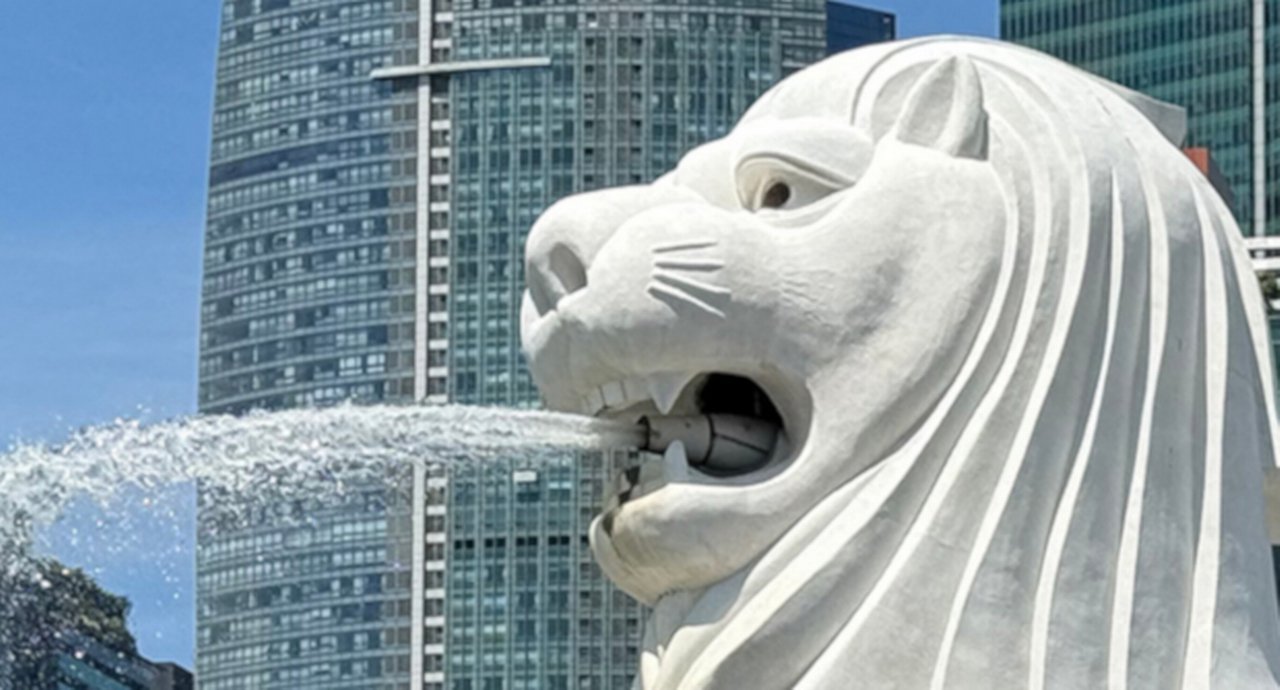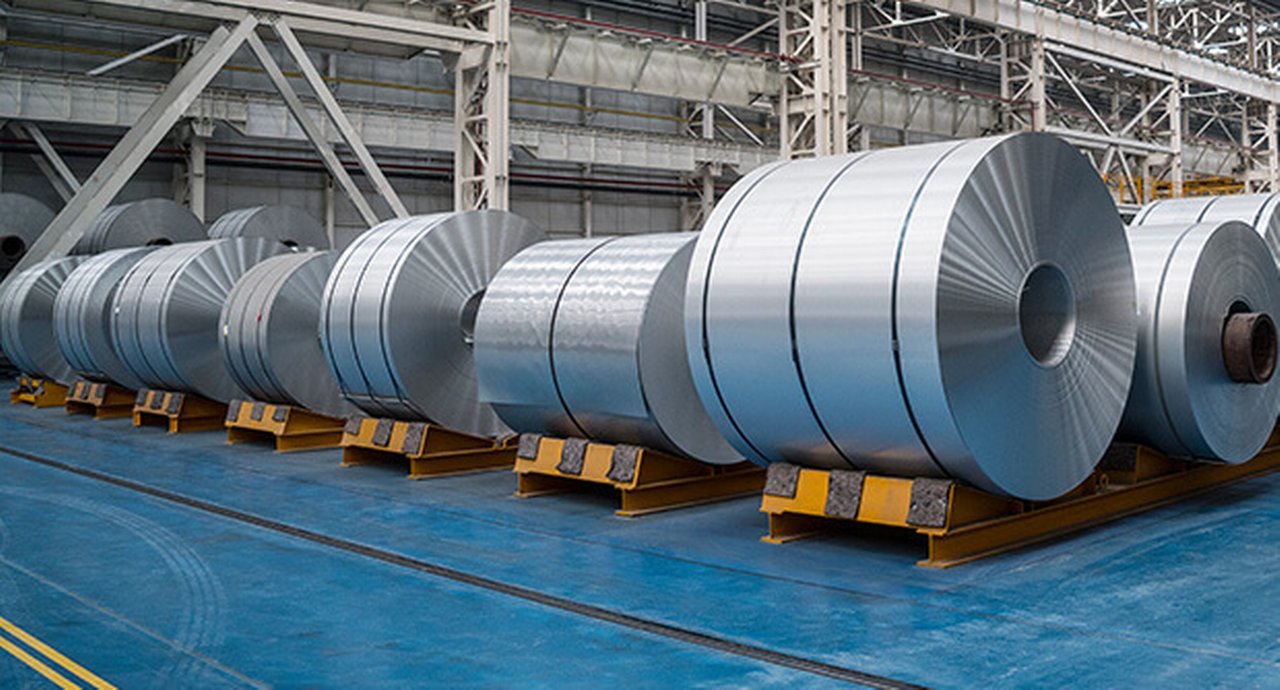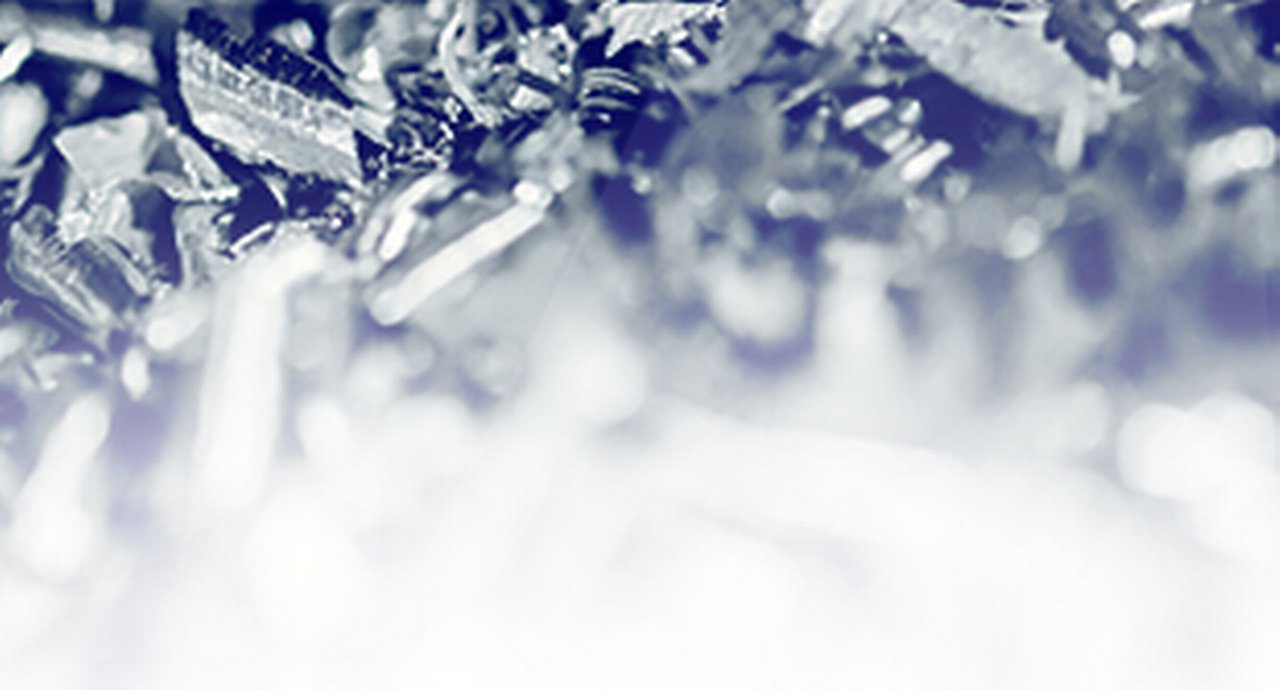9 July 2025
As economies seek to make sure they have access to critical commodities in the wake of tariff wars and military escalation, the trading landscape is changing. flow reports key themes from TXF Amsterdam and EIT RawMaterials in Brussels
MINUTES min read
By 2030, the EU needs to extract 10% of its annual demand for key raw materials by boosting its metal extraction and refining capabilities, according to the Critical Raw Materials Act that came into force on 23 May 2024.1 According to Bernd Schäfer, CEO of EIT RawMaterials in his opening talk to 1000 delegates at the EIT Raw Materials Summit in Brussels on 14 May,2 it also requires “a profound shift in perception and more education”.
Co-funded by the European Union (EU), EIT RawMaterials is a networking organisation committed to supporting Europe’s raw materials security and this annual event is now in its seventh year.
In May 2024 Deutsche Bank’s Global Head of Natural Resources Finance Yann Ropers and Julian Kettle of Wood MacKenzie commented that the clean energy transition “is and will continue to be metals intensive”. Metals and minerals demand has further accelerated since then.
Key takeaways
- Metals demand is intensifying not only because of energy transition but the increase in national defence investment
- Natural resources are becoming politicised in the aftermath of tariffs and a race to secure supply chains
- Europe and the US have opportunities to source critical minerals from Africa but China has been doing this for years
New natural resources landscape
US President Trump’s Liberation Day speech on 2 April and subsequent tariff announcements have undermined trust in the institutions and structures that underpinned the global economic system the Bretton Woods conference of 1944 and the end of World War II. Add to this the ongoing conflict on Europe’s borders and most recently in the Middle East, with the landmark agreement from NATO member states to commit 5% of their GDP on defence and security-related investments by 2035 (up from the current 2%)3.
“Everything needs to be considered to secure the supply of critical minerals in the same way that China has done”
How will this increase be funded? And what does this mean for commercial banks that have to prioritise profitable projects. With price volatility prevalent this creates challenges in attempting to model risk/return when securing approvals from funding stakeholders. As Ropers put it on one of the RawMaterials Summit discussion panels in Brussels, “Maybe Europe has forgotten where we came from…we need to have the ambition to actually grow our economy and industries – everything needs to be considered to secure the supply of critical minerals in the same way that China has done.”
This means governments and the private sector working together. Anne Laurenroth, Deputy Head of the International Cooperation, Security, Raw Materials and Space Department at the Federation of German Industries (BDI) noted, “Securing the supply chains and securing raw material and component inputs into defence and security is a joint effort and it’s a joint task…it’s about having the strategic dialogue between governments and their industrial base and how to secure that.”
According to the Brussels-based metal producers’ body Eurometaux, achieving the EU’s 2030 raw materials goals will require the opening of at least 10 new mines, 15 processing plans, and 15 recycling plants in the coming years. Making this happen quickly enough – given it can take 10 to 15 years before a new mine actually produces – circles back to Schäfer’s point that overcoming public opposition to mines is essential.4
Trade and the new nationalism
Geopolitics, geoeconomics, the dominance of China in critical minerals, and shifting supply chains dominated panel discussions at TXF’s Global Natural Resources and Commodities Finance event, held in Amsterdam on the same days (14–15 May) as the EIT RawMaterials event.
Delegates heard that soft commodities would be particularly affected by the increased influence of nations as they build their own security in trade and economic terms. Copper prices have surged this year, driven partly by these uncertainties in supply chains and partly by difficulties in exporting copper from Africa. China has been stockpiling cobalt and lithium,
tightening its grip on critical minerals and metals.
“The tectonic plates of the world economy are shifting”
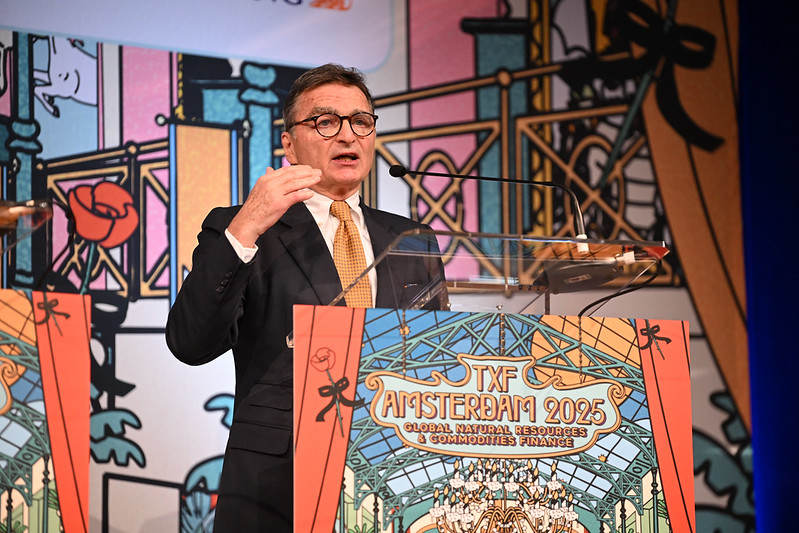
Lambert Commodities’ Jean-François Lambert talks commodities security in Amsterdam
Security of access to natural resources was much more in the spotlight than in previous years Jean-François Lambert, founding partner of consultancy Lambert Commodities observed, “Security itself is not to be taken for granted: the tectonic plates of the world economy are shifting. This will have significant consequences for the commodities sector.” Panelists agreed that the sector appears set to be volatile for some time to come.
This of course presents opportunities for the industry. Commodity traders are expanding fleets and diversifying their supply chains to take advantage of more nationalist approaches to energy and food security, reflecting a general desire to reduce dependency on any one country. They are responding to the new routes that are emerging as China, in particular, diverts its LNG trade towards the Middle East and away from America to minimise the impact of tariffs.
Politicisation of commodities
In her keynote presentation on the second day, independent trade economist Dr Rebecca Harding even argued that we needed to regard the world as at “economic war” to understand the nature of current uncertainty and to be able to create new institutions and financial structures, especially in Europe. Commodities are central to this: the sector has been politicised, and this takes away agency from traders and players in the market. Yet there are opportunities, she suggested.
- Supporting national security. While the commodity finance landscape faces turbulence driven by the seismic changes in the geostrategic landscape, if the industry looks to be “prepared” for its increasingly important role in national security it can formulate approaches and strategies accordingly. This represents a mindset change – hope for the best but prepare for the worst. Traders are looking at integrating their supply chains vertically to overcome risks, and increasingly looking exploring supply chain trade finance solutions to mitigate the uncertainty.
- Deploy technology. While the sector is reeling from the likely politicisation of artificial intelligence, there are still opportunities to streamline and automate operations and supply chains using these new technologies.
- Continue the energy transition commitment. It was agreed that energy security rests on energy transition. Some panelists stressed that there are still concerns around the risks of greenwashing, and the current de-prioritisation of sustainability creates much uncertainty around the regulatory frameworks in the US and how rigorously sustainability regulations will be enforced. Nevertheless, energy transition still represents a major opportunity. The key is to make it secure, affordable and reliable as part of national strategies so the continued support of export credit agencies in defining strategic investments is central.
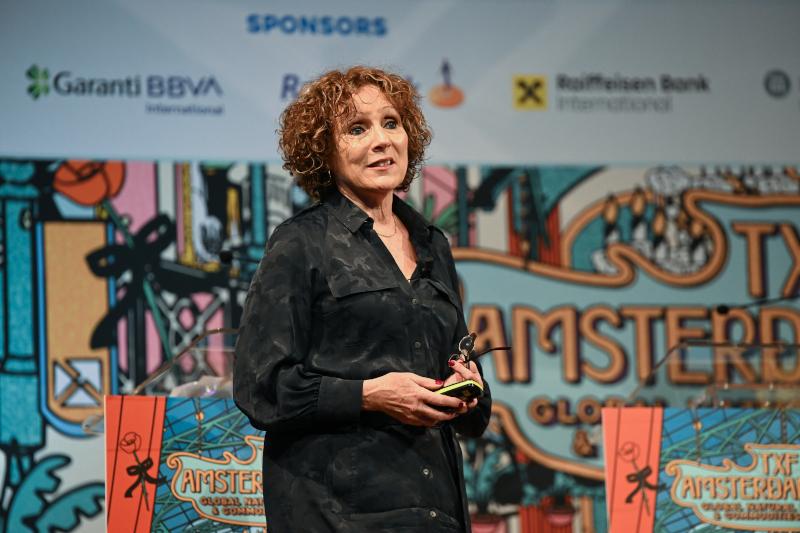
Trade economist Dr Rebecca Harding explains why “the world is at economic war”.
Africa
The commodity sector is buffeted by change, but Africa represents a major beacon of hope. It is the “next frontier” in terms of both critical minerals for the digital economy globally and for renewable energies. World demand for critical minerals will remain high for the foreseeable future and, according to Dr Robert Besseling, founder and CEO of Pangea-Risk, Africa’s potential to produce these for the world surpasses other global regions. African growth is resilient and while the continent is clearly reliant on China’s entrenched position, the fact that the US and Europe need to catch up in terms of access should encourage inward investment in the continent. Nations within Africa with critical mineral resources are the ones that are enjoying the most rapid growth, he said.
However, the core challenge, as always, is that Africa comprises multiple countries and not just one. Growth rates vary and infrastructure supporting intra-African trade is still a challenge to the region’s role in intermediate or final product global value chains. Volumes of Commodities finance deals on the TXF Dealmakers Database dropped back in 2024 and the general perception that there is higher risk associated with Africa takes the shine off its potential in the critical minerals space. “The only other significant change in regional distribution is the collapse in volumes across Africa. US$1.11bn represents an 84.7% decrease year-on-year. Africa has historically maintained a few billion dollars in deals per year through its upstream operators, and 2023 produced significant activity at US$7.2bn. More deals were brought to market in 2024 – nine compared with seven the previous year – but at much smaller volumes,” noted the TXF’s Commodity Finance Data Full Year 2024.5
Yet despite the gloom, most participants saw the glass as half full, not half-empty. Africa is, in the words of one speaker, “a whole world in itself” and there will always be opportunities. New structures are being created and the security focus for the industry around the world means that there are opportunities to be had. “We are traders, we will make our way through somehow” said one. This attitude was reflected equally elsewhere with perhaps the most significant quote to sum up the whole event being this: “The market is flexible and adaptable, and commodity finance relies more on long-term trends than on political events. These events may cause disruptions, but they don’t change how the market works at its core.”
EIT RawMaterials Summit took place in Brussels on 14 May 2025
TXF Amsterdam 2025 – Global Natural Resources and Commodity Finance was held 14-15 May 2025
All conference photos © Exile Group Limited
Sources
1 See europarl.europa.eu
2 See eitrmsummit.com
3 See nato.int
4 See eitrawmaterials.eu
5 See txfnews.com

